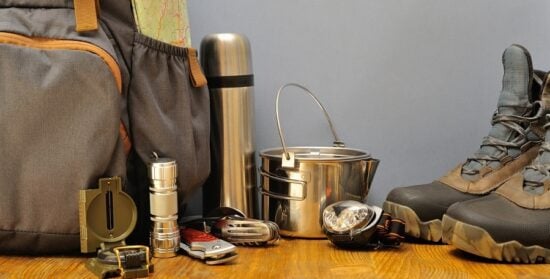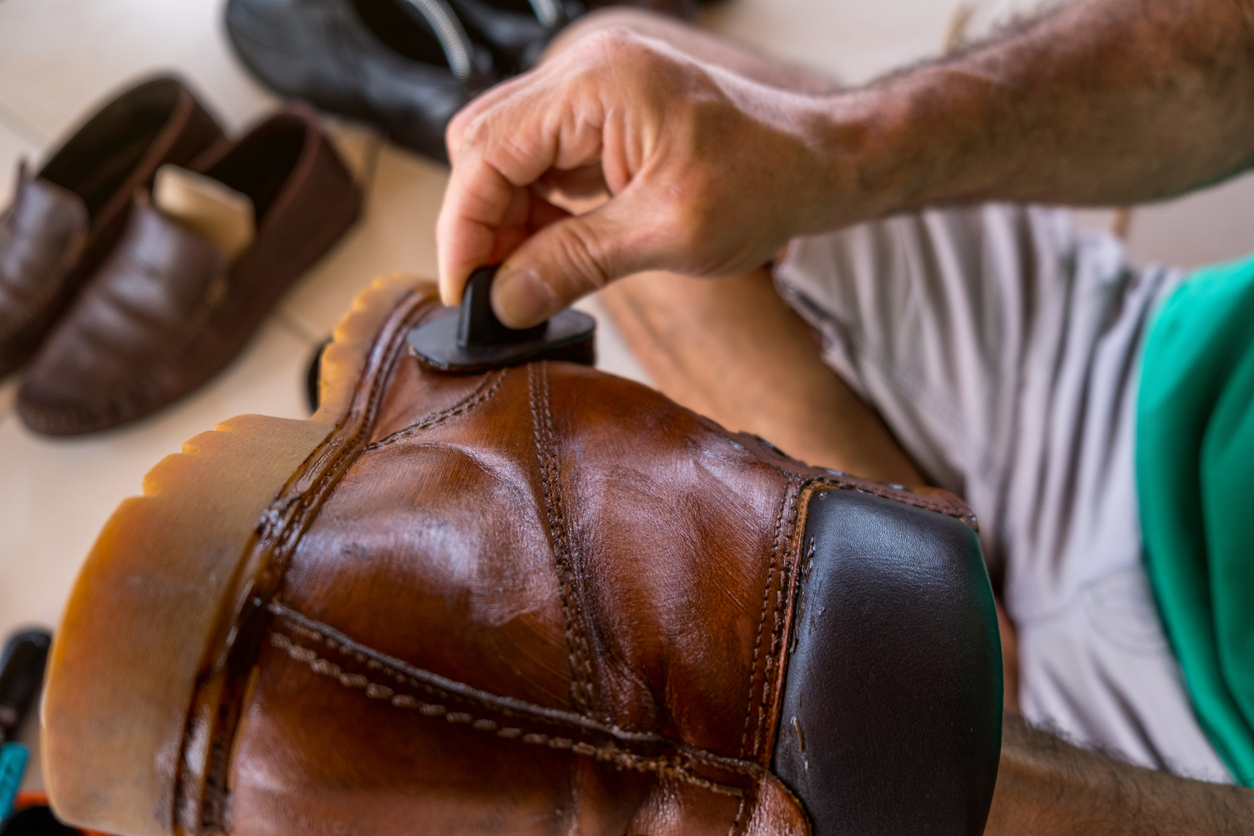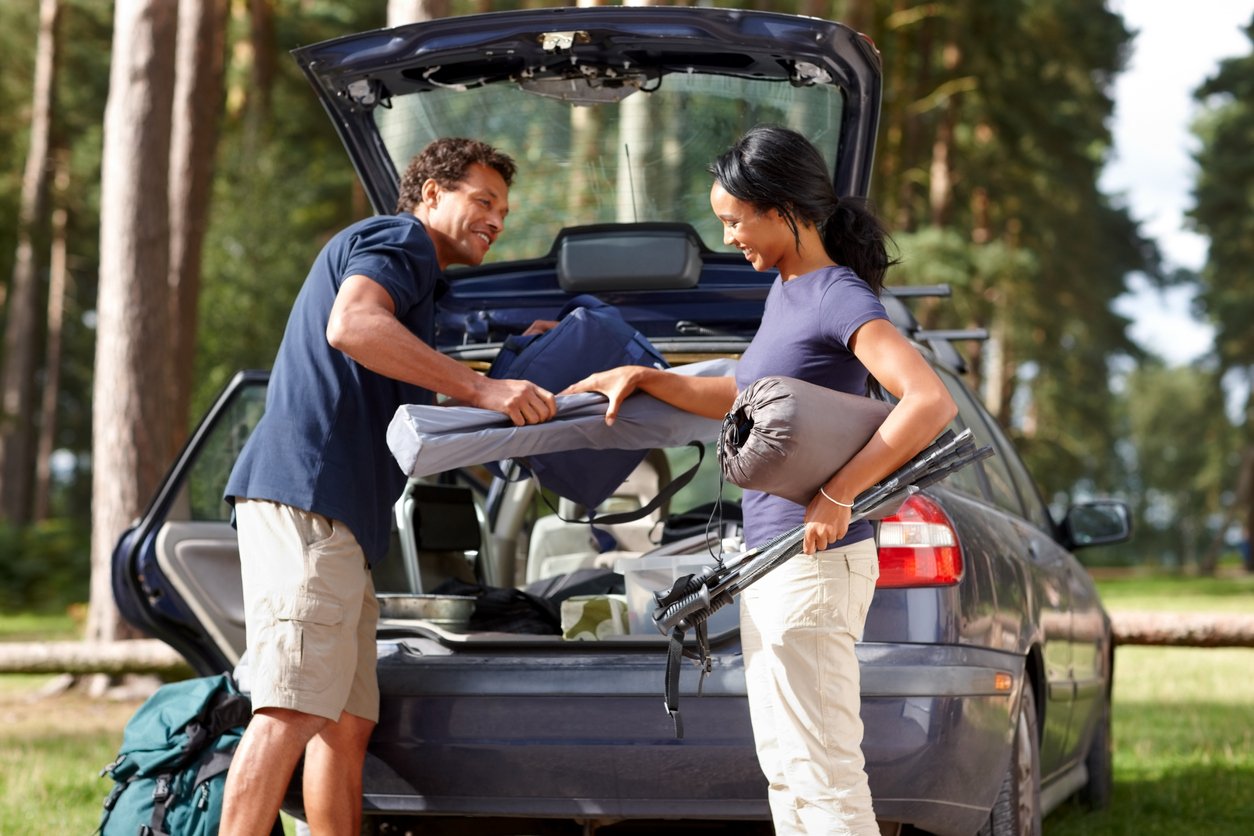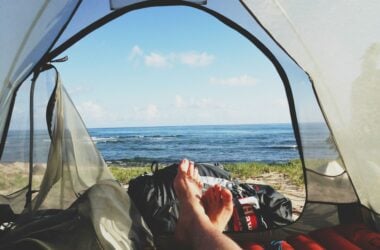Camping is a great way to take advantage of the benefits of outdoor time and spend time with friends and family. But living outdoors requires a considerable amount of supplies. For families who camp frequently, camping gear storage can be a challenge. This ultimate guide to camping storage will help you figure out the best way to store your camping gear to keep it in top shape and easily accessible for your next trip.
Assess Your Supplies
The way you store your camping gear plays a big factor in how long it lasts and how easy it is to prepare for your next camping trip. However, unless you have a space designed especially for camping storage, neatly and conveniently packing away all your camping supplies is a major struggle.
The best way to determine your camping storage needs is to figure out how much gear you have and the amount of space you’ll need to store it. Depending on how large your group is and the camping activities you enjoy, this can mean carving out a significant amount of space. Whether you just returned from camping or are preparing for the camping season, begin by getting all your camping supplies together to figure out exactly what you have and what you need.
Take Inventory
As you sort through your gear, making a list will help you get a clear understanding of what you need to store and how many things you need to purchase or replace. Carefully check each item for damage and get rid of items that are beyond repair. As you eliminate items, compose a shopping list of things you need to replace.
You may choose to use separate lists for each category to use as a final inventory list for each storage container. Digital lists can be stored on your phone for easy access while packing and at the campsite. If you decide to use your storage containers for car storage and campsite use, you may prefer to tape a paper list to the inside lid of each container.
Sort and Categorize
Camping gear comes in all shapes and sizes. Sorting your gear by size and category can help you keep everything organized and put what you need right at your fingertips. Organizing in this fashion means your storage containers can be used in the car and wherever you camp. Your camping gear categories may include:
Camping Kitchen
This category consists of everything your camping group needs for cooking and eating, including stove and fuel, firestarter, frying pan, cooking utensils, cutting board, eating utensils, plates and cups, camp sink, coffee pot, can opener, sharp knife, dish towel, and trash bags.
Bedding
Whether you’re a minimalist or need all the comforts of home, your bedding may include sleeping bags, air mattresses, sleeping pads, and camping pillows.
Tents and Tarps
Keeping your basic dwelling equipment together ensures you have what you need. This might include tents and stakes, tarps, and sun shades.
Tools
The tools you need to set up your camping site and keep everything running smoothly may include a rubber hammer, a multi-tool, duct tape, an extra cord, a mattress repair kit, a saw, and an ax.
Packs and Bags
Backpacks are convenient for hiking or simply moving from one activity to another. The bags you use while camping may include duffle bags for clothing and supplies, sturdy backpacks for each family member, and insulated bags to keep food cool.
First Aid
Whether you purchase a ready-made kit or you put the essentials together yourself, your camping first aid kit should include bandages, gauze pads, blister treatment, tweezers, hand sanitizer, hydrogen peroxide, cotton balls, a thermometer, ice packs, heat packs, aspirin, an emergency whistle, and antibiotic salve.
Clothing
If you keep certain items only for camping, they should be stored with your camping gear. Camp clothing may include rain gear, moisture-wicking tees and socks, swimwear, lightweight jackets, and sleepwear.
Footwear
Camping may require boots or hiking shoes that you don’t typically wear. It’s also a great idea to store extra socks with your camping shoes.
Camp Chairs and Hammocks
The items that make your campsite comfortable may include collapsible camping chairs, folding tables, or a hammock.
Activity Gear
Whether you enjoy hiking, biking, fishing, rafting, swimming, tubing, or other camping activities, you need gear for each member of the family. These items can be bulky ones like helmets, life vests, tackle boxes, hiking boots, fishing poles, and safety gear.
Essentials
This category includes the things you don’t want to be without, like toilet paper, sunscreen, bug repellent, baby wipes, a compass, flashlights, batteries, and emergency supplies.
There are many additional supplies that you may use for camping. Keeping both essential and optional supplies organized can help you avoid forgetting anything. When taking inventory and sorting through your camping gear, remember to consider replacing items that children might have outgrown.
Prepare Your Camping Gear for Storage
A big part of taking care of your gear is proper cleaning and storage. If your camping gear is wet, dirty, or broken when you store it, you can expect it to be in poor condition when you’re ready to use it again. So take these steps to prepare different types of camping gear for storage.
Wash All the Bedding
Sleeping bags, extra blankets, and pillowcases may look clean, but they’ve likely picked up sweat, dust, and debris during your trip. Packing clothing or bedding with stains or odors will mean the issues are tougher to remove after storage. Odors in stored fabrics can also attract unwanted pests.
Air Out the Tent
Whether you take care of it at the campsite or after you return home, ensuring your tent is clean and dry before storage is vital to prevent mold and mildew buildup during storage. Set up the tent outside in a shady area until it is completely dry. Brush away all dirt and sand from the tent’s surface, stakes, and poles before rolling up the tent for storage.
Wash the Dishes
No matter how clean you keep your campsite, it’s not an optimal space for washing kitchenware. Dirty dishes and utensils are a breeding ground for bacteria. Unload everything in the kitchen and thoroughly wash dishes, pans, and utensils before putting them in storage. Remove the fuel from your camping stove, brush away crumbs, and wipe the stove clean before storing.
Inspect and Wash Camping Clothes
If you have clothing that you intend to use for your next camping trip, it should be thoroughly laundered before storage. Most people wear everyday clothing for camping trips. But items like jackets, hiking socks and boots, and rain gear often go into storage. Inspect each of these items for rips and tears or other damage. Launder everything that is machine washable, and brush all debris from shoes and other wearables you intend to store.
Empty, Clean, and Protect the Lanterns
Cleaning your lanterns properly not only ensures they’ll put out more light, but it’s also essential to keep them in good working order. Empty fuel from propane lanterns to avoid lacquer buildup in the tank’s fuel tube. Clean your lantern with dishwashing soap and water, then dry thoroughly. Before storage, wrap protective material around glass globes and seal the lantern in a plastic bag to prevent insects from crawling into openings that could result in blocked fuel or airflow.
Wash and Waterproof Hiking Boots
After a long hike, it’s essential to air out your boots and ensure they’re thoroughly clean and dry before storage. After allowing boots to air out and thoroughly dry, use a stiff brush to remove dirt and debris. Sprinkle baking soda inside to absorb odors, or wash and dry removable insoles. When boots are completely dry, apply a waterproofing treatment according to the manufacturer’s instructions.
Inspect Safety Gear
Items like helmets and life vests are only protective if they don’t have any damage or flaws. Check each helmet for cracks or deep scrapes. Inspect chin straps and buckles for wear or fraying, paying close attention to seams. Examine all life vests for tears, frayed fabric, or worn fasteners. Always ensure all safety vests are the recommended size for both children and adults. Discard worn or damaged safety gear, and add those items to your shopping list before your next trip.
Practical Containers and Storage Systems for Camping Storage
Sturdy, weatherproof containers are the best way to corral your camping gear and ensure it’s ready to go when you’re prepared to embark on your next trip. Many campers choose containers that do double-duty as storage in the car and at the campsite as well. While some items are easy to corral into tight spaces, others are best stored in different positions. Try mixing and matching some of these options to find your own unique camping storage system.
Storage Bins
Storage bins with tight-fitting lids are one of the most popular options for storing camping gear. They can be stacked neatly or used in the car. Also, they are sturdy enough for outdoor use. Choose a large bin for your camp kitchen, and you can use smaller containers inside to separate and organize items. Large bins can also be used to hold tents, hammocks, and camping gear. Whatever you choose to store in clear bins will be easier to see.
Cubbies
Smaller items or items you use in your home might not benefit from covered storage bins. A cubby system with different sized cubicles can provide storage options for clothing, lanterns, hats, and first aid kits. Color-coded cubes can allow you to store outerwear, hiking clothes, gloves, socks, and hats for each member of the family. If you store merino wool in open containers for long periods of time, place them in sealed plastic bags to prevent damage from silverfish and moths.
Repurposed Shoe Hangers
An over-the-door shoe organizer can be repurposed as vertical storage for small items that store better alone. The numerous small pockets can be used to store headlamps, balaclavas, sunglasses, and battery packs. Shoe hangers make packing these essential items a cinch.
Breathable Bags
Airtight storage is great for eliminating weather issues and keeping pests out. However, some gear should be stored in breathable containers. Sleeping bags, sleeping pads, and tents shouldn’t be stored for long periods of time in a way that compresses their protective materials.
For instance, storing your sleeping bag in its stuff bag compresses the insulation and reduces its ability to sustain warmth. Sleeping pads respond poorly to moisture and temperature extremes, so they shouldn’t be packed tightly.
Although tents usually come in a storage bag, it’s not the best choice for long-term storage. It’s best to store your tent loosely in a bag that doesn’t reduce airflow. Breathable bags for sleeping bag and tent storage may be composed of cotton or mesh. If you don’t have any on hand, large cotton pillowcases will provide a suitable substitute.
Pegboards
Pegboards are one of the most versatile options for utilizing vertical space. If you have the wall space, a pegboard could provide you with the option to hang gear that quickly gets messy when dumped into bins. Use your pegboard to hang helmets, ropes, climbing gear, and backpacks.
Find Appropriate Storage Space for Your Camping Gear
Now that you have everything neatly packed, it’s time to figure out exactly where to put it. If you have a spare room you aren’t using or a large empty space in the garage, you’ve already found the perfect space to set up your camping gear storage system. Unfortunately, many people don’t have this option, and you’ll need to get creative. Consider these options to find the ultimate camping storage solution for every type of gear.
Garage Storage
Carving out space in your garage for storage is optimal for a variety of gear. Insulating your garage door can help provide temperature control for sensitive items. If you have plenty of space, consider installing some heavy-duty shelves to neatly store your storage bins and other containers. If you use your garage for storage, use these tips to avoid potential issues with moisture and dust:
- Use airtight storage containers for most things you store in the garage to avoid damage from moisture and humidity.
- Use your tarps as dust covers for larger items like camping chairs, hammocks, and tents.
- Avoid storing sleeping bags and sleeping pads in the garage whenever possible.
Closet Storage
Whether you have a spare closet for your camping storage or you’re looking for every spare nook and cranny in your home, utilizing extra closet space is a great way to store camping gear. Hang rarely worn clothing in the back of your closet. Take advantage of top shelves for loose storage. Use these additional tips to make the most of your closet space:
- Hang sleeping bags and sleeping pads for proper storage.
- Organize clothing with the most worn items on the left.
- Hang backpacks with essentials inside, so you’ll always have the items you need on hand.
- Store lightweight items on the top shelves and dirty items like shoes near the floor.
Under-the-Bed Camping Storage
If you store your camping gear in the garage or an outdoor shed, under-the-bed storage can be a great way to store items that require humidity or temperature control. Items like sleeping pads and tents can be safely stored beneath the bed.
Just avoid storing delicate items under the bed if you have cats or small dogs that might use your sleeping pad as a scratching post or your tent stakes as a chew toy. Also, use under-bed storage containers with wheels for extra storage.
Hanging Storage
If you don’t have closet space, hanging your camping gear is still possible. Portable closets can be placed in spare rooms, garages, or even the attic. If you have a shelving system, consider hanging a curtain rod between two shelves to hang rain gear, live jackets, and clothing you only wear while camping. Hooks installed under top shelves or on walls can provide additional storage options for bulky items.
Wall-Mounted Camping Storage
Many camping activities require the use of large items that can take up a lot of space. Hang skis, bicycles, camping chairs, rock climbing gear, helmets, fishing poles, and even kayaks vertically. Use these tips for safe and organized wall storage.
- Ensure your wall mount bike rack is designed to support the weight and type of bikes you own.
- Make sure your kayak’s weight is evenly distributed on wall racks. When using straps, use a cushion on the floor and make sure the cockpit is facing out.
- Seek temperature-controlled storage for fishing rods.
Shed Storage
If you have a shed or other outdoor building, much of your camping gear can be safely stored outdoors. As long as your shed is sturdy and weatherproof, you can basically use it in the same way you use garage space to store your camping gear.
Airtight storage bins will keep many items safe in outdoor storage. You can also add storage systems like shelves, pegboards, and hanging racks. However, it’s best to avoid storing temperature-sensitive items in your shed.
Storage Rental
If you simply don’t have space for proper camping storage at home, renting a storage space could provide you with the optimal camping storage solution. Instead of tucking gear in every nook and cranny throughout the house, you can organize all your gear in one place. This is a great option for families who camp regularly or individuals with apartments or smaller homes. Renting space to store your camping gear allows you to choose if you prefer to store items close to home or near your favorite campsite.
If you have difficulty finding a traditional storage facility in your area, consider self-storage. Neighbor provides a variety of storage options for all sizes and types of camping gear. Whether you need the space to store a few items in a couple of bins, or gear for the whole family and mountain bike or kayak storage, you can find the right size storage unit in practically any location.
Finding storage near you is easy. Simply input your location and the type and size of storage you need, and you’ll get a variety of options to choose from. No matter what type of storage rental you choose, take these things into consideration when making your choice.
- Location: Do you prefer to store your camping gear near your home, or near your favorite camping spot?
- Accessibility: Can you drop in to get your gear and return it when you choose?
- Insurance: Do you need to purchase separate storage unit insurance, or does the cost include insurance?
- Security: What security features exist to ensure your possessions don’t get stolen while in camping storage?
Camping Storage Tips & Tricks
In-Car Storage
- Use frozen water bottles in your cooler to keep food cold.
- Pack the tent into the trunk last, so it’s the first thing you remove when you arrive at the camping site.
- Use the same storage bins you use at home for travel.
- Designate a space in the car for essentials like toiletries, flashlights, and sunscreen.
- Allow each child to be responsible for their own backpack or duffel bag.
Home Storage
- Nest smaller bags within larger ones for streamlined duffel and backpack storage.
- Use a tall laundry basket for tall awkward items like oars, trekking poles, and foam rollers.
- Place a few packets of desiccants into each storage bin to eliminate moisture.
- Wipe out your storage bins before returning clean items to them for storage.
- If you keep your inventory list on the inside of storage containers, put sticky labels on the outside for easy identification.
- Remove batteries from electronics like flashlights and headlamps before storing.
- When drying sleeping bags, sleeping pads, and tents, keep them out of the sun to avoid degrading the material.
- Always stack heavy bins and boxes near the floor, so you’ll naturally bend your knees for proper lifting without injury.
For most families, camping gear is a considerable investment. The choices you make in camping storage are a big factor in how long the gear lasts. Proper camping storage means your camping gear will be a pleasure to use when you go out on your next adventure. Organized storage will help you get on the road right away.
Browse all our cleaning guides:
- How to Clean Car Seats
- How to Clean a Mattress
- How to Clean a Fish Tank
- How to Clean Wood Furniture
- How to Clean your Outdoor Patio and Lawn Furniture
- Spring Cleaning List






